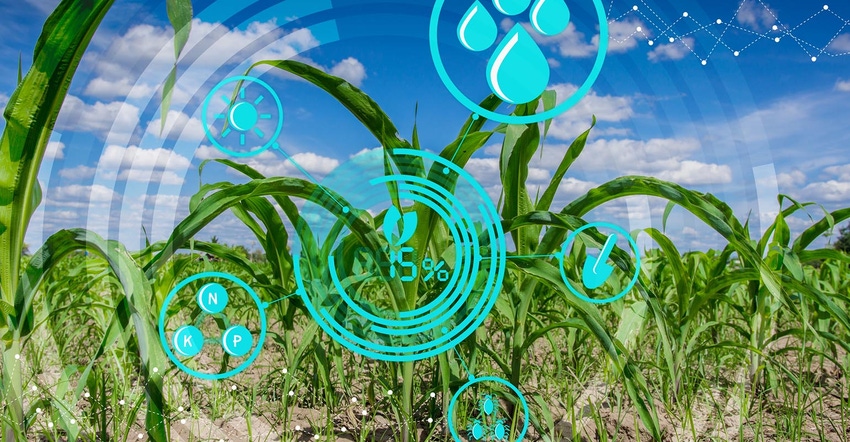May 22, 2019

One of the agtech challenges facing farmers, and the ag industry, is the abundance of data and the lack of tools to help make decisions. Every major player in the market is grinding away on software and new machine-learning systems. A major tech player is upping the ante with news this week of the expansion of its program into global agriculture.
IBM announced Wednesday, May 22, that it will provide a global agriculture solution combining predictive technology with The Weather Company data and Internet of Things sensor information to give farmers greater insights into all aspects of their operations. “IBM has a global footprint,” observes Jeff Keiser, lead offering manager, agribusiness solutions, The Weather Company. “The Watson Decision Platform is relatively new, but it demonstrates our capacity and capability to serve a global marketplace.”
IBM and its Watson system, first made famous on Jeopardy a few years ago, is a system that can draw in a vast amount of information and help make decisions from that data. Farmers have been testing an early version of the platform, showing the potential of the system.
Keiser explains that this latest announcement builds on that early work, offering a range of crop modeling tools for key crops including corn, wheat, soybeans, cotton, sorghum, barley, sugar cane and potatoes. And there’s the promise of more to come.
IBM has been ramping up its presence in agriculture. Earlier this year, the company announced a new partnership with Yara to bring digital services to the farm. “With this latest global expansion, we want to tie into the global client base,” Keiser adds. He explains that the Yara relationship is a good example of the global partnerships the company hopes to make through this latest crop expansion.
For IBM, the tech is the start, but getting that data collected from analyst to the farm will require the company to partner with retail level players. But it’s a full-circle approach because IBM offers its Food Trust system using blockchain technology to trace food products from farm to consumer.
Data and decisions
And there’s a lot of information out there to use. IBM estimates that the average farm generates about 500,000 data points a day, which will grow to 4 million data points by 2036. This includes the vast weather and in-field condition data that’s being collected in many ways. Applying artificial intelligence and analytics to the aggregated field, machine and environmental data offers the potential to improve crop returns.
Those new crop models can be predictive showing in-field totals of just how much crop is on each acre, and Keiser says that gets more precise as harvest nears. In addition, the new crop models will help with in-season crop management, taking information from a wide range of resources – satellite imagery, sensors in the field, and global weather data – to help identify opportunities for crop management.
The key for this new platform and the crop models is aggregating information from a range of sources, then providing useful management response. “One of the things that IBM is basic in is moving data out in the field from the point of origin to the cloud then onto our platform with analytics,” he says. “We’re looking at various mechanisms for gathering information from machines moving in the field to stationary sensors.”
“I farm in Indiana with a high degree of topography with low spots and high spots, sand and high organic matter soils,” Keiser says. “The thing that challenges me is getting rid of the water I get. Some of the areas to use the analytics is to determine the different impacts of last year’s rains; and how I might change management on my own farm.”
Those new crop models will now be available in the U.S., Canada, Mexico and Brazil, and the company plans to grow into Europe, Africa and Australia. The next step is for IBM to partner with retailers, like Yara, and others to bring those service to the farm.
About the Author(s)
You May Also Like






